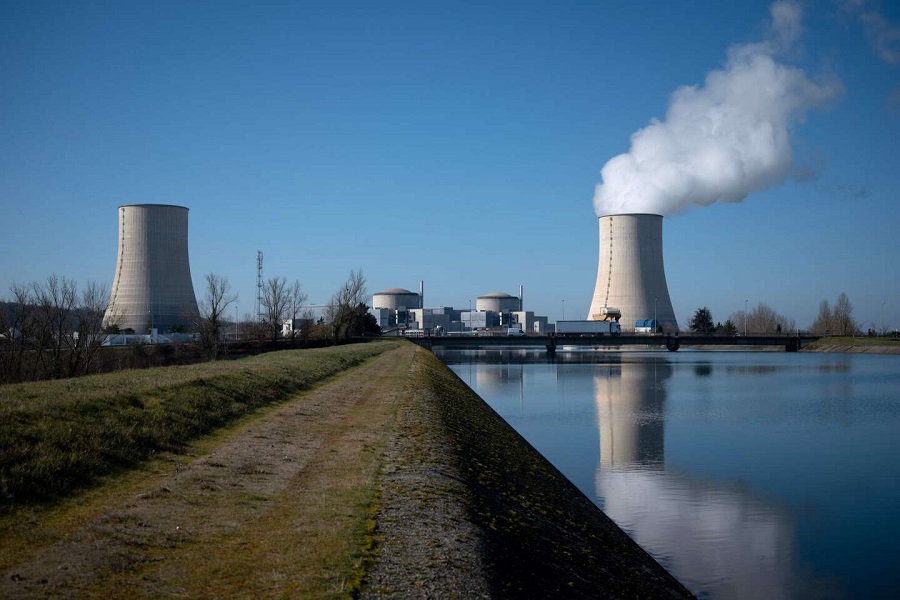11 Dec 2024

Tired Earth
By The Editorial Board

The additional 50 GW of nuclear capacity is estimated to cost between €5 and €11 billion per GW, a range that “shows a great deal of uncertainty and a big difference in the assumptions”, energy economist Professor Jaques Percebois told Euractiv.
Basic assumptions
When costs are expressed in terms of electricity production (measured in kWh, GWh), they take into account the total cost of generating unit of power: investment in construction, operation (day-to-day running, maintenance, etc.) and fuel (loading, life cycle, etc.). This is the Levelised Cost of Energy (LCOE).
However, estimates often focus on the investment costs required to construct the plant (measured in kW, GW)
“Because it represents around 70% of the cost of a new reactor while operating costs represent only around 15% and fuel costs around 15% of the total amount,” explained Percebois.
Different estimates may include or exclude costs associated with decommissioning plants and treating the waste. Cost figures can also be strongly impacted by assumptions about external factors like future inflation rates.
Construction and financing
At the heart of construction are financing costs that can influence the final construction bill “by more or less 30%”, according to Percebois.
There are four non-exclusive ways for developers to finance their projects: equity, equity financing, borrowing and public subsidies.
Today external private equity investment into the development of nuclear plants in Europe is rare.
One model being explored is for a cooperative of large industrial electricity consumers to invest in a plant’s construction. In return they benefit from exclusive rights to all or part of the electricity produced. This is the model chosen in Finland for the latest Olkiluoto 3 reactor.
“It’s conceivable, but it won’t be the most widespread model in Europe, insofar as few consumers are capable of absorbing the output of a large nuclear reactor”, according to François Lévêque, professor of economics at the Mines Paris PSL engineering school.
This makes borrowing the main channel for private capital to fund nuclear reactor construction.
The costs of borrowing can be substantial, depending on the amount requested, who is borrowing the money, and bank’s confidence in the project’s chance of success.
There are many ways of reducing these interest costs. The most important one is to reduce the loan size by maximising the use of public subsidies and publicly-backed equity.
Any country wishing to subsidise nuclear plant construction needs to navigate EU State aid rules. A number of member states are also calling for the possibility of dipping into European funds to finance nuclear power, or even to set up new dedicated funds.
Support for financing from publicly-backed banks, such as the European Investment Bank (EIB), can also prove decisive.
“Their contribution is essential because of the low rates charged and the signal sent out to other investors”, explained Valérie Faudon, General Delegate of Sfen, the French nuclear support association.
Finally, a state shareholder, such as France in the case of EDF, can make direct capital injections, which reduces the risk of insolvency. More generally, nuclear companies can use their own balance sheets to fund construction. Both approaches can help reduce interest rates of any accompanying loans.
Power production rates
A plant’s expected electricity production rate deeply influences its estimated operating costs.
In France, “the Energy Regulation Commission’s optimism about the nuclear’s production potential has led to an estimate of the current nuclear power cost [for a fleet of 56 operating reactors] at around €60/MWh, compared with €75/MWh for EDF”, said Jacques Percebois.
Nuclear power production rates are difficult to forecast as “it […] depends largely on the electricity system and mix in the coming years, whose composition is not clearly known for 15 or 30 years”, added Lévêque.
The chosen technology
The technology chosen for the reactor will also be crucial.
The sheer scale of large reactors brings complexity, which has resulted in construction delays and cost overruns. This is essentially what is happening with the reactors under construction in France at Flamanville and in the UK at Hinkley Point.
“Just as you will never find the same airport twice, you will never really find the same nuclear reactor twice,” Lévêque explained. “As a result […] costs stagnate or rise, but never fall.”
Serial production = lower unit costs
Proponents of small modular reactors (SMRs) argue that this problem can be overcome by mass producing smaller scale nuclear plants.
Thanks to the serial effect, the unit costs of serially produced reactors can be “20 to 25%” lower than the costs of the first reactor, according to Percebois. The International Energy Agency (2021) and Sfen (2018) estimate a reduction of up to 30%.
In France, experts estimate that this cost saving will kick in from the 5th reactor onwards.
While large reactors can benefit from the serial effect, it’s impact is greater when many reactors are rolling off a production line – as may be the case for SMRs.
More clarity needed
This mix of factors explains the wide variations in cost estimates for new nuclear. However, at some point it will be necessary “to have figures” warns Percebois, if only to estimate funding requirements.
EDF seeks further clarity on how many reactors will be developed in Europe, noting the 58 GW of announced (but not necessarily confirmed) new nuclear capacity will not be sufficient for Europe to reach 150 GW by 2050.
Source : euractiv.com
Comment